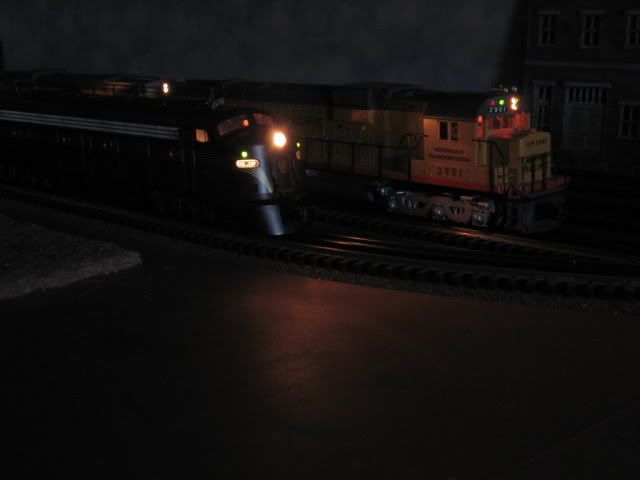If I have a DC powered LED and hook it up, will it only light when hooked up one way to the two wires from the power supply?
Replies sorted oldest to newest
That's true, a diode will only pass current one way. It becomes very obvious when powered with your DC power supply and you connect it the wrong way.
As Rob stated this is true BUT there are also bi-color LEDS that will glow "red" in one direction and when the wires are switched will glow "green".
Also there are tri-color LEDS that will glow, red, green and yellow! The yellow is achieved by applying ac current to the LED!
Note that any of these connections require current limiting to the LED, so don't forget the resistor or the LED will have a very short life! ![]()
Good point John. Need two that light up at 1 volt DC and are bright, but will hold out with current as high as 12v DC or so.
You are unlikely to find a LED that will light with only one volt.
Al W.
1V is not going to happen as Al says, red LED's start around 1.5V, white around 3V.
Is this for triggering your turntable per your other thread? If so, you don't need to actually see the light. An IR (Infrared) LED will "light" up at just about 1V so you just need an optical sensor that responds to IR.
One thing working in your favor is in general IR LEDs can handle more current than typical LEDs since the voltage is only about 1V (vs. ~3V for a typical white LED). That is, power is Voltage x Current. Since Voltage is less than your typical LED, the allowed current is higher for the same power. That ought to help operate over your wide range of 1 to 12V with some kind of current limiting of course (e.g., resistor).
As Rob stated this is true BUT there are also bi-color LEDS that will glow "red" in one direction and when the wires are switched will glow "green".
These LED are two lead, Reverse polarity for a different color.
Is this for triggering your turntable per your other thread? If so, you don't need to actually see the light. An IR (Infrared) LED will "light" up at just about 1V so you just need an optical sensor that responds to IR.
One thing working in your favor is in general IR LEDs can handle more current than typical LEDs since the voltage is only about 1V (vs. ~3V for a typical white LED). That is, power is Voltage x Current. Since Voltage is less than your typical LED, the allowed current is higher for the same power. That ought to help operate over your wide range of 1 to 12V with some kind of current limiting of course (e.g., resistor).
Is this for triggering your turntable per your other thread? If so, you don't need to actually see the light. An IR (Infrared) LED will "light" up at just about 1V so you just need an optical sensor that responds to IR.
One thing working in your favor is in general IR LEDs can handle more current than typical LEDs since the voltage is only about 1V (vs. ~3V for a typical white LED). That is, power is Voltage x Current. Since Voltage is less than your typical LED, the allowed current is higher for the same power. That ought to help operate over your wide range of 1 to 12V with some kind of current limiting of course (e.g., resistor).
As Rob stated this is true BUT there are also bi-color LEDS that will glow "red" in one direction and when the wires are switched will glow "green".
These LED are two lead, Reverse polarity for a different color.
As Rob stated this is true BUT there are also bi-color LEDS that will glow "red" in one direction and when the wires are switched will glow "green".
These LED are two lead, Reverse polarity for a different color.
Set of Weaver E-8 that the LED's were added. At the time a small TAS kit, that was powered from the Smoke unit output of an EOB board , no smoke unit.


... there are also bi-color LEDS that will glow "red" in one direction and when the wires are switched will glow "green".
Also there are tri-color LEDS that will glow, red, green and yellow! The yellow is achieved by applying ac current to the LED!
These effects are created by two and three LEDs in a single case.
I had worked with a Tomar Drum light and coach light kit for one of the Fort Pitt Highrailer's passenger car. It is amazing just how small an LED can be.
The small mass between the red and blue wires.

Used to light this coach light.

I had worked with a Tomar Drum light and coach light kit for one of the Fort Pitt Highrailer's passenger car. It is amazing just how small an LED can be.
The small mass between the red and blue wires.
Used to light this coach light.

Very nice. Which kit? We need a few. Easy installation in a car with interior?
I had worked with a Tomar Drum light and coach light kit for one of the Fort Pitt Highrailer's passenger car. It is amazing just how small an LED can be.
The small mass between the red and blue wires.
Used to light this coach light.

Very nice. Which kit? We need a few. Easy installation in a car with interior?
?? 807L ??? Not sure about the light colors but it is an LED illuminated piece that includes resistors and a small bridge rectifier. Soldering required.






